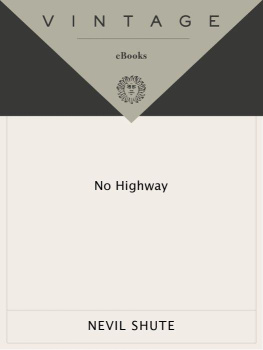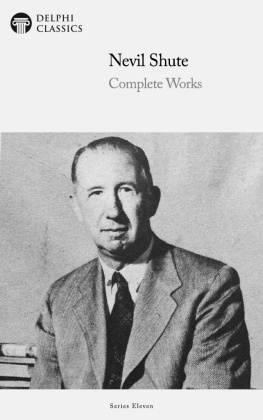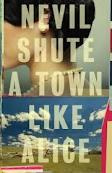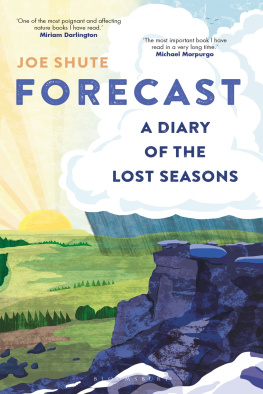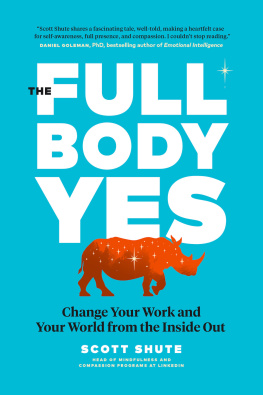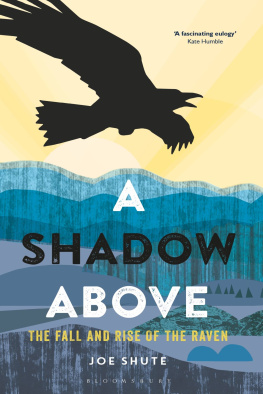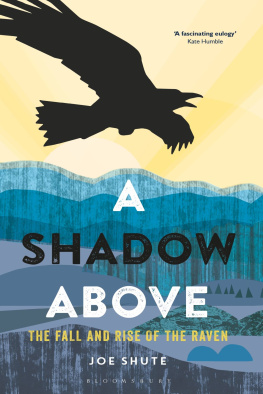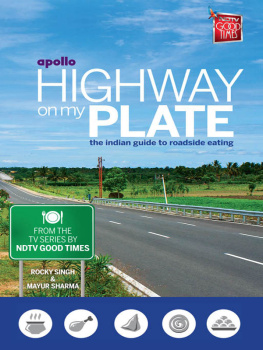Nevil Shute - No Highway
Here you can read online Nevil Shute - No Highway full text of the book (entire story) in english for free. Download pdf and epub, get meaning, cover and reviews about this ebook. year: 2010, publisher: Vintage, genre: Detective and thriller. Description of the work, (preface) as well as reviews are available. Best literature library LitArk.com created for fans of good reading and offers a wide selection of genres:
Romance novel
Science fiction
Adventure
Detective
Science
History
Home and family
Prose
Art
Politics
Computer
Non-fiction
Religion
Business
Children
Humor
Choose a favorite category and find really read worthwhile books. Enjoy immersion in the world of imagination, feel the emotions of the characters or learn something new for yourself, make an fascinating discovery.
- Book:No Highway
- Author:
- Publisher:Vintage
- Genre:
- Year:2010
- Rating:3 / 5
- Favourites:Add to favourites
- Your mark:
- 60
- 1
- 2
- 3
- 4
- 5
No Highway: summary, description and annotation
We offer to read an annotation, description, summary or preface (depends on what the author of the book "No Highway" wrote himself). If you haven't found the necessary information about the book — write in the comments, we will try to find it.
No Highway — read online for free the complete book (whole text) full work
Below is the text of the book, divided by pages. System saving the place of the last page read, allows you to conveniently read the book "No Highway" online for free, without having to search again every time where you left off. Put a bookmark, and you can go to the page where you finished reading at any time.
Font size:
Interval:
Bookmark:

FIRST VINTAGE INTERNATIONAL EDITION, OCTOBER 2010
Copyright 1948 by William Morrow & Co. Inc.
All rights reserved. Published in the United States by Vintage Books, a division of Random House, Inc., New York. Originally published in book form in Great Britain by William Heinemann Ltd., London and in the United States by William Morrow & Co. Inc., New York, in 1948. This edition first published in Great Britain by Vintage Books, an imprint of The Random House Group Limited, London, in 2009. Copyright The Trustees of the Estate of Nevil Shute Norway.
Vintage is a registered trademark and Vintage International and colophon are trademarks of Random House, Inc.
This is a work of fiction. Names, characters, places, and incidents either are the product of the authors imagination or are used fictitiously. Any resemblance to actual persons, living or dead, events, or locales is entirely coincidental.
eISBN: 978-0-307-47412-4
www.vintagebooks.com
v3.1
WHEN I WAS put in charge of the Structural Department of the Royal Aircraft Establishment at Farnborough, I was thirty-four years old. That made a few small difficulties at first, because most of my research staff were a good deal older than I was, and most of them considered it a very odd appointment. Moreover, I wasnt a Farnborough man; I started in a stress office in the aircraft industry and came to Farnborough from Boscombe Down, where I had been technical assistant to the Director of Experimental Flying for three years. I had often been to Farnborough, of course, and I knew some of the staff of my new department slightly; I had always regarded them as rather a queer lot. On closer acquaintance with them, I did not change my views.
In spite of my appointment from outside I found them quite co-operative, but they were all getting on in years and beginning to think more about their pensions than about promotion. When I got settled in I found that each of them had his own little niche and his own bit of research. Mr. Morrison, for example, was our expert on the three-dimensional concentrations of stress around riveted plate joints and he was toying with a fourth dimension, the effect of time. What he didnt know about polarised light wasnt worth knowing. He had been studying this subject for eight and a half years, and he had a whole room full of little plate and plastic models broken upon test. Every two years or so he produced a paper which was published as an R. and M., full of the most complicated mathematics proving to the aeroplane designer what he knew already from his own experience.
Mr. Fox-Marvin was another of them. I discovered to my amazement when I had been in the department for a week that Fox-Marvin had been working since 1935 on the torsional instability of struts, with Miss Bucklin aiding and abetting him for much of the time. They were no laggards at the paper work, for in that time they had produced typescript totalling well over a million words, if words are a correct measure of reading matter that was mostly mathematical. At the end of all those years they had got the unstabilised, eccentrically loaded strut of varying section just about buttoned up, regardless of the fact that unstabilised struts are very rare today in any aircraft structure.
I knew that I had been appointed from outside the Royal Aircraft Establishment as a new broom to clean up this department, and I had to do a bit of sweeping. I hope I did it with sympathy and understanding, because the problem of the ageing civil servant engaged in research is not an easy one. There comes a time when the research worker, disappointed in promotion and secure in his old age if he avoids blotting his copybook, becomes detached from all reality. He tends to lose interest in the practical application of his work to the design of aeroplanes and turns more and more to the ethereal realms of mathematical theory; as bodily weakness gradually puts an end to physical adventure, he turns readily to the adventure of the mind, to the purest realms of thought where in the nature of things no unpleasant consequences can follow if he makes a mistake.
It is easy to blackguard these ageing men and to deride their unproductive work, easy and unprofitable and unwise. Short-term ad hoc experiments to solve a particular problem in the design of aircraft were the main work of my department, but I was very well aware that basic research also has a place in such a set-up, the firm groundwork of pure knowledge upon which all useful short-term work must be erected. In the great mass of typescript chaff turned out by the Fox-Marvins and the Morrisons within the R.A.E. were hidden grains of truth. Callow young men entering the Establishment from the universities, avid for knowledge and enthusiastic in their early years, would read through all this guff and take it very seriously, and find and recognise the little grains of truth, and take them into their experience and use them as their tools for short-term work.
I had to steer a middle course, therefore, as every sensible new broom must do. Within the first year I had transferred two of the oldest of my scientific officers, and I had changed the line of three others. It was a busy year, because I got married soon after I went to Farnborough. Shirley was a local girl who had taught drawing and music in a little school in Farnham before the war; when the school evacuated she had become a tracer at the R.A.E. In the fourth year of the war she was sent to Boscombe Down to work in the drawing office; she had her desk and drawing board just outside my little glass cubicle, so that every time I looked up from my calculations I saw her auburn head bent over her tracing, which didnt help the calculations. I stood it for a year, high-minded, thinking that one shouldnt make passes at the girls in the office. Then we started to behave very badly, and got engaged.
We got a flat in Farnham with some difficulty and got married into it soon after I took up my new job. It was a very small flat, with just one bedroom and a sitting-room and a bathroom, and a kitchen that we had our meals in. It was big enough for all we wanted, and we were very happy. There wasnt much for Shirley to do, since I was away all day, and we didnt plan to start a family for a year or so. So she went back to teaching music and drawing in the school that she had taught in before, and one of the girls she taught was Elspeth Honey.
She told me about Elspeth one evening when we were siting after the nine-oclock news. Shirley was sewing a slip or something, and I was working at the first paper that I had been asked to read before the Royal Aeronautical Society, which I called Performance Analysis of Aircraft Flying at High Mach Numbers. It was something of a distinction that I had been asked to read this thing, and I was very busy working on it in the evenings.
Shirley told me about Elspeth as we sat there; she was teaching her to play the piano at that time. Shes such a funny little thing, she said thoughtfully. I cant make out if shes immensely clever or just plain bats.
I looked up, laughing. Ive been wondering that about her father ever since I took over the department. Because Mr. Theodore Honey was another one of the old gang of budding Einsteins that I had inherited. So far I had left him alone, feeling that the work that he was doing on fatigue in light alloy structures was probably useful. But I must admit that there were moments when I had my doubts, when I wondered if Mr. Honey was not sliding quietly into an inoffensive form of technical mania.
Shirley bent over her sewing. She looks so odd, she said presently, with her straight black hair and her white little face, and those ugly frocks she wears. She never seems to play with the other children. And she does say the queerest things sometimes.
Font size:
Interval:
Bookmark:
Similar books «No Highway»
Look at similar books to No Highway. We have selected literature similar in name and meaning in the hope of providing readers with more options to find new, interesting, not yet read works.
Discussion, reviews of the book No Highway and just readers' own opinions. Leave your comments, write what you think about the work, its meaning or the main characters. Specify what exactly you liked and what you didn't like, and why you think so.

